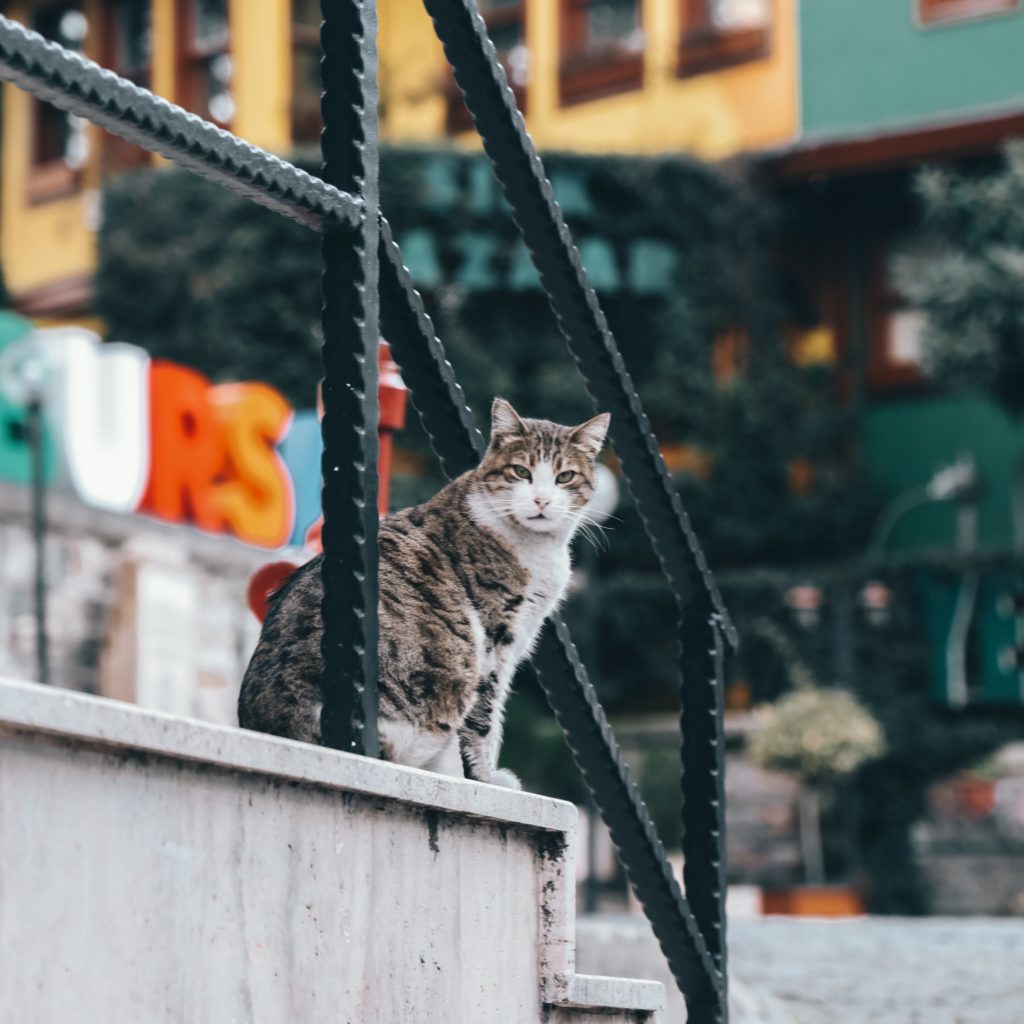Hay is one of the most essential and common core words in the Spanish language, used constantly to talk about the existence or non-existence of all things.
Hay in Spanish translates to both there is and there are in English. It is the third-person singular present tense conjugation of the verb haber. It is an impersonal form, however, so it remains the same regardless of whether the noun following it is plural or singular: it is always hay.
This post will teach you how to use hay in Spanish. We’ll cover the affirmative, as well as the negative: no hay. We’ll also show you some common phrases that use hay to expand your repertoire and make your life easier.
Now let’s get down to business!
Hay in Spanish: The Basics
Before we get into the more descriptive details of how to use hay in Spanish, let’s just remember the absolute basics of the word: on its own, it means there is or there are. Knowing this is the main thing you need to know about hay in Spanish, even if it takes some time to use the various accompanying words we’ll introduce next.
- There are five girls in my class. – Hay cinco chicas en mi clase.
- There are no trees in the garden. – There aren’t any trees in the garden. – No hay árboles en el jardín.
- Are there animals at the zoo? – ¿Hay animales en el zoológico?
- There is butter in these pastries. – Hay mantequilla en estos pasteles.
- There are very pretty paintings in the gallery. – Hay pinturas muy bonitas en la galería.
- There is a spider in my bed! – ¡Hay una araña en mi cama!
Hay in Spanish with countable vs uncountable nouns
With that, we’re ready to go into the other words we use with hay. We can classify these accompanying words based on whether the nouns we’re referring to are countable or uncountable. What do we mean by this? Let’s see a few countable and uncountable nouns to get the idea:
- Countable nouns: tres tacos, dos cevezas, un perro – three tacos, two beers, a dog
- Uncountable nouns: aire, agua, sal – air, water, salt
To recognize uncountable things, think how you’d need to use “some” in English rather than being able to say an actual number. Like, “give me a beer,” vs “pour me some wine.” One is countable (a beer), while the other is of an unknown quantity (some wine). With this in mind, let’s see the two related sets of words we use with hay in Spanish.
Hay + singular countable nouns
These are the hay phrases we use when we’re referring to a specific countable thing.
In English you would say that there is a thing for the affirmative, and in Spanish this translates directly as hay.
| There is a | Hay un …, Hay una |
In the negative you’d say there is not a thing or there are not any things. In Spanish the equivalent in the negative is ningún for a masculine thing or ninguna for a feminine thing.
An important difference between English and Spanish is that we don’t use the plural when asking questions, or when speaking in the negative with ningún. Whereas in English you might say “are there any?,” in Spanish we keep it in the singular: “¿hay algún?.” We don’t really ask questions like “¿hay algunos …?”.
| English: singular or plural | Spanish: singular form only |
| There is not a …, There is no …, There are no … | No hay ningún …, No hay ninguna … |
| Is there a …?, Are there any …? | ¿Hay algún …?, ¿Hay alguna …? |
Let’s look at some examples:
- There is a cat on the stairs. – Hay un gato en la escalera.
- There is a girl in the yard. – Hay una niña en el patio.
- There is not a plate on the table. – There are no plates on the table. – No hay ningún plato en la mesa.
- There is not a window in the attic. – There is no window in the attic. – There aren’t any windows in the attic. – No hay ninguna ventana en el ático.
- Is there a bar nearby? – Are there any bars nearby? – ¿Hay algún bar cerca?
- Is there a shop in the city? – Are there any shops in the city? – ¿Hay alguna tienda en la ciudad?
Hay + singular uncountable nouns
When we’re referring to vague quantities of whatever thing there is, we need to choose from a few other accompanying words
| There’s a little … | Hay un poco de … |
| There is some … | Hay algo de … |
| There is a lot of … | Hay mucho …, Hay mucha … |
| There isn’t any[thing] …, There is no[thing] … | No hay nada de … |
| Is there any …? | ¿Hay algo de …? |
Let’s have a look:
- There is little water in the glass. – Hay un poco de agua en el vaso.
- There is some cheese in the fridge. – Hay algo de queso en el refrigerador.
- There is a lot of sand on the beach. – Hay mucha arena en la playa.
- There isn’t any sugar in the jar. – There is no sugar in the jar. – No hay nada de azúcar en el tarro.
- There is nothing wrong with that. – There isn’t anything wrong with that. – No hay nada de malo con eso.
- Is there any vinegar for the salad? – ¿Hay algo de vinagre para la ensalada?
Hay in Spanish: Plural Nouns
Here we have it a bit easier since, by definition, the uncountable nouns won’t be used in plural. However, there are a few details to consider.
As we saw in the previous section on singular countable nouns, we’ll still use the singular forms in Spanish when we ask questions or speak in the negative with ningún, even if we’re talking about multiple things. In these instances we keep the noun in singular too.
The exception to the above rule is when we just use no hay, in which case we use the plural noun.
Let’s see the two groups in the following tables, which all refer to plurals. The first is more intuitive, since it uses the plural forms and plural nouns. The second one is also used for plurals, even if it is stated in the singular.
| English plurals | Spanish, with plural nouns |
| There are some | Hay algunos, Hay algunas |
| There are many | Hay muchos, Hay muchas |
| There are few | Hay pocos, Hay pocas |
| There are | Hay |
| There are no | No hay |
| English plurals | Spanish, with singular nouns |
| There are not any | No hay ningún, No hay ninguna |
| Are there any…? | ¿Hay algún …? ¿Hay alguna? |
Let’s see these in some examples. Notice that even though we’re always referring to plural things, some of the Spanish versions appear in the singular based on the rules we just covered:
- There are some belts on sale. – Hay algunos cinturones en oferta.
- There are some iguanas in the tree. – Hay algunas iguanas en el árbol.
- There are many vendors at the bazaar. – Hay muchos vendedores en el bazar.
- There are many pigeons in the square. – Hay muchas palomas en la plaza.
- There are few buses today. – Hay pocos autobuses hoy.
- There are few oranges in the basket. – Hay pocas naranjas en la cesta.
- There are no houses for sale. – No hay casas en venta.
- There aren’t any professors in the classroom. – No hay ningún profesor en el salón.
- There aren’t any people in the bathroom. – No hay ninguna persona en el baño.
- Are there any rooms available? – ¿Hay alguna habitación disponible?
Hay in Spanish: Conjugation
As mentioned before, haber is an impersonal verb, so its conjugation is headache-free and straightforward. For our needs here, we just conjugate it in third-person singular, regardless of whether we’re using it to refer to singular or plural things.
Here is a full conjugation chart showing how to say there is and there are in all the Spanish verb tenses. If you don’t know some of the tenses, just focus on the basic ones you’re familiar with. We include the others to have a complete list that you can review whenever you need to.
| Spanish verb tense | Haber conjugation |
| Simple present | Hay |
| Simple past / Preterite | Hubo |
| Imperfect past | Había |
| Simple future | Habrá |
| Present perfect | Ha habido |
| Past perfect | Había habido |
| Simple conditional | Habría |
| Perfect conditional | Habría habido |
| Present subjunctive | Haya |
| Imperfect subjunctive | Hubiera |
| Perfect subjunctive | Haya habido |
| Pluperfect subjunctive | Hubiera/Hubiese habido |
Hay in Spanish: Common Phrases
There are a couple of essential idiomatic uses of hay in Spanish which we’ll introduce here, as well as a handful of other common phrases which have hay in them.
Hay que + infinitive: It is necessary to …
This is one of the most common forms employed with hay. It is used to express that “one must do something” or that “it is necessary to do something” or that “you have to do something.” It is used to express obligation or urgency, without naming a particular subject: we cannot conjugate “hay que” with any other personal pronouns like “yo” or “tú.”
- One must eat vegetables to be healthy. – Hay que comer vegetales para estar saludable.
- It is necessary to clean the green areas of the park. – Hay que limpiar las áreas verdes del parque.
- You have to arrive three hours before an international flight. – Hay que llegar tres horas antes de un vuelo internacional.
Hay + weather nouns
This use of hay is similar to our initial examples where we use it to simply mean “there is” or “there are,” but specific to weather. We use hay to talk about specific types of weather, normally paired with a weather noun.
- It’s very sunny. – Hay mucho sol.
- We can’t see. It’s foggy. – No podemos ver, hay niebla.
- There are some clouds in the sky. – Hay algunas nubes en el cielo.
- It seems like it’s going to rain. There is thunder and lightning. – Parece que va a llover. Hay truenos y relámpagos.
Of course there’s a lot more detail to describing weather, so if you’re interested you can check out our detailed post about weather in Spanish where we cover everything you need to know.
Other common Spanish phrases with hay
These ones don’t really need much explanation.
| No problem | No hay problema |
| There is no one | No hay nadie |
| What’s up? | ¿Qué hay? |
| What’s new? | ¿Qué hay de nuevo? |
| You’re welcome | No hay de qué |
Conclusion
Well, we’ve pretty much covered everything at this point. Let’s review a little before we say goodbye, shall we?
First of all, remember that we use hay to talk about the existence of things. Likewise, we use no hay to talk about the non-existence of things. Here’s our handy recap of these fundamentals:
- Hay – There is / There are
- No hay – There isn’t / There aren’t
We learned that hay is the third-person singular conjugation of the verb haber in the simple present tense, creating an impersonal form. This means that the conjugation remains the same regardless of whether the noun is plural or singular. We also saw the complete haber conjugation chart showing hay in all the verb tenses.
Going a little more in-depth, we discussed the difference between countable and uncountable nouns, looking at the words to accompany hay for each category.
Finally, we saw some common phrases that use hay, especially the “hay que + infinitive” construction which denotes necessity. We hope you enjoyed the post, and that it helped you better understand the different uses of the fundamental word hay in Spanish! ¡Hay que seguir y nunca rendirse! – It’s necessary to keep going and never give up!
Exercises
After covering all the theory, why don’t you try putting it into practice with a few exercises?
These exercises are intended to get you more familiar with the accompanying words we saw in the section on countable or uncountable nouns. Read through each sentence and choose the noun which makes sense in the context.
Don’t worry if you don’t know all the vocabulary! You should still be able to make a good guess based simply on the forms of the words. The answers and translations are below. Good luck!
1. Hace calor. ¿Hay algo de _____ en la jarra?
a) botellas de agua
b) vinos
c) agua
2. En el parque hay muchos _____.
a) niños
b) perro
c) sol
3. Hay algunos _____ en el cielo.
a) nube
b) pájaros
c) avión
4. No hay nada de _____ en el frasco.
a) azúcar
b) galletas
c) fresas
5. No hay ninguna _____ sobre la mesa.
a) vaso
b) taza
c) teléfono
6. ¿Hay _____ en el panal?
a) chocolate
b) libros
c) miel
7. ¿Hay alguna _____ famosa en la película?
a) gatos
b) actriz
c) actor
8. ¿Hay _____ frías en la nevera?
a) brócoli
b) cerveza
c) cervezas
9. Hay un poco de _____ en el congelador.
a) helado
b) pepino
c) salsas
10. Hay pocos _____ disponibles.
a) clases
b) asientos
c) personas
Answers
1. Hace calor. ¿Hay algo de agua en la jarra? – It’s hot. Is there any water in the jug?
c) agua – water
2. En el parque hay muchos niños. – In the park there are many kids.
a) niños – kids
3. Hay algunos pájaros en el cielo. – There are some birds in the sky.
b) pájaros – birds
4. No hay nada de azúcar en el frasco. – There isn’t any sugar in the jar.
a) azúcar – sugar
5. No hay ninguna taza sobre la mesa. – There aren’t any cups on the table.
b) taza – cups
6. ¿Hay miel en el panal? – Is there honey in the honeycomb?
c) miel – honey
7. ¿Hay alguna actriz famosa en la película? – Are there any famous actors in the film?
b) actriz – actress
8. ¿Hay cervezas frías en la nevera? – Are there cold beers in the fridge?
c) cervezas – beers
9. Hay un poco de helado en el congelador. – There’s a little bit of ice cream in the freezer.
a) helado – ice cream
10. Hay pocos asientos disponibles. – There are few seats available.
b) asientos – seats




